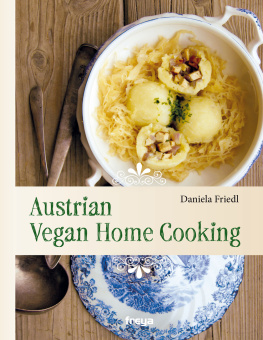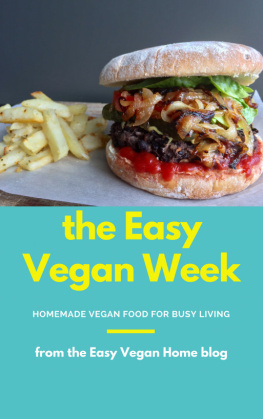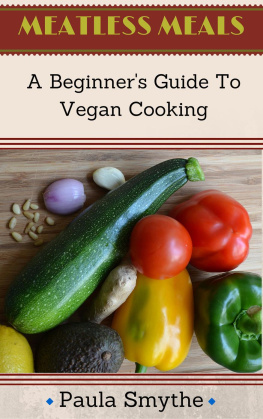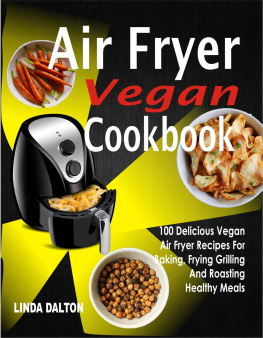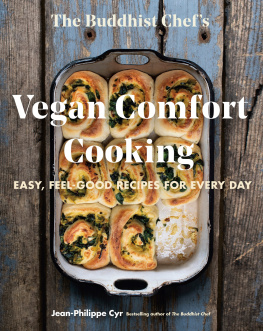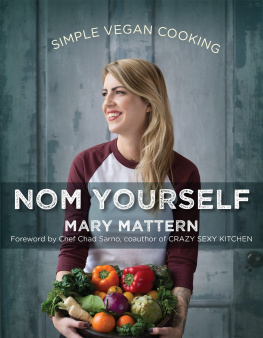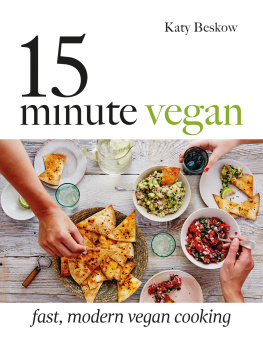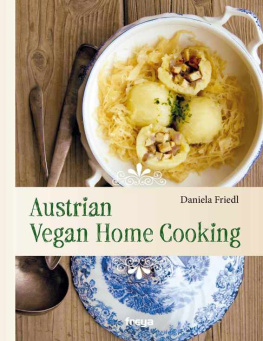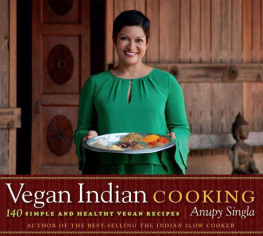
Daniela Friedl
Austrian Vegan Home Cooking


ISBN 978-3-99025-198-0
2015 Freya Verlag KG
All Rights Reserved
A-4020 Linz, Austria
www.freyabooks.com
Layout: freya_art, Daniela Waser
Translation: Adam Gordon
Editor: Rebecca Baker
Photos: Daniela Friedl, Christina Fink (Pages )

I dedicate this book to my Uncle Ferdinand (1950 2011), an expert in Austrian history and devotee of our inimitable cuisine, as well as to my dear Grandma Maria, the best donut baker in Salzburg. Thank you for your patience and valuable advice!
Tradition is handing on the flame, not the worshipping of ashes.
G USTAV M AHLER
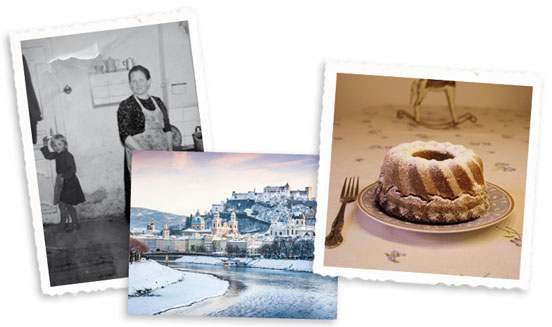
Culinary Memories
As I was born in the region of the Salzburg Lakes, my memories are shaped by Austrias unmatched tradition of home cooking. I love to recall the dishes from my childhood warming soups and hearty meals, followed by fine pastries and puddings.
Most of all I liked to help my Grandma in the kitchen, eating the dough that was actually needed for the cake. For the most part I would be preoccupied with rolling the sticky mass off my tiny fingers.
I enjoyed the warmth of the oven and its homely smells. In my little world, nothing ever smelled quite as good as Grandmas fresh apple cake.
Even today I associate certain foods with home, family and a sense of belonging. So when I decided to live as a vegan, I was afraid Id cut my ties with these cherished memories once and for all.
Being vegan however has nothing to do with renunciation or loss. Quite the opposite a little bit of courage, creativity and imagination and you are ideally equipped for the Vegan Home Cooking adventure.
I wish you good luck, a lot of fun while cooking and Guten Appetit!
Daniela
Contents:

Austrian Cuisine
Austria is associated with traditional regional cuisine and with particularly high-quality cakes and pastries. As the capital of Austria, Vienna was the culinary treasure chest of all the lands under Hapsburg control. These stretched beyond the borders of Austria and across territories which are now parts of Hungary, the Czech Republic (Bohemia and Moravia), Slovakia, Poland, Italy, Slovenia, Croatia, Serbia, Romania and Ukraine.
This multicultural and ethnically diverse cuisine is a true gift to the palate. The distinctive influences of traditional Imperial Austrian cookery make the culinary inheritance of this Alpine republic a rich and varied treasure trove to which each respective country has added its own unique gems. Classic dishes such as Palatschinken (derived from the Czech palainka ) or goulash (from the Hungarian gulys ) are timeless and inspire every generation anew.
Although Austrian cuisine is often equated with Viennese cuisine, every one of the nine Austrian federal states has its own traditional dishes, all influenced by its particular regional products.
A love of eating, a special atmosphere and classic Austrian comfort in the inns, wine taverns and coffee houses are still all-pervasive, even today.
Helpful Information on the Recipes

Units of Measurement
tbsp = tablespoon
tsp = teaspoon
kg = kilogram
g = gram
L = liter
cL = centiliter
mL = milliliter
Alternatives
The terms non-dairy milk, non-dairy whipped cream, non-dairy cream, non-dairy butter, and non-dairy cheese are deliberately kept open and non-specific in the recipes. The word non-dairy is only included in the list of ingredients, and for greater ease of reading is not mentioned from then on in the recipe itself.
Non-dairy milk derived from soya, rice, coconut, spelt, oats, almonds, hazelnuts, quinoa and millet is available.
I recommend fresh soya milk on the basis of its taste and consistency and suggest that you take note both of whether its been manufactured using organic ingredients and also whether its been produced locally in the region.
Please take into account that both almond and hazelnut milk possess a particular sweetness all of their own and a distinctive nutty taste, and consequently these varieties will be listed separately in the recipes that follow.
Non-dairy milk derived from soya, rice and coconut is available and lends itself wonderfully to whipping.
Particularly worthy of mention is soya cream, an ideal alternative to sour cream and crme fraiche, and creamier and stronger than non-dairy cooking cream (currently available made from a soya, rice, spelt and oat base).
As a general rule, non-dairy cheese is manufactured with a foundation of various plant oils and/or tofu.
Both the taste and melting ability can vary according to the manufacturer, so its worthwhile just testing cheeses and thus discovering your own favorite product. Basically non-dairy cheese is available in block form, in slices, in spreadable form or also grated.
Non-dairy butter barely differs from cows milk butter in consistency, presentation and taste. It consists mainly of various plant-based oils.

